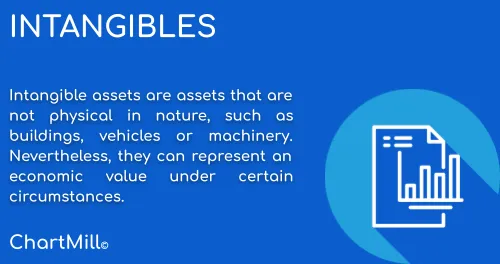Intangibles Explained
By Kristoff De Turck - reviewed by Aldwin Keppens
Last update: Apr 19, 2024
Intangible fixed assets are assets which are not physical in nature like buildings, vehicles or machinery.
Another major difference is that tangible assets do represent a certain value and are always marketable. This is much more difficult to establish for intangible assets. To determine whether there is any value at all, we look at what exactly falls under these intangible assets.
Brand Value
'Brand Value' represents an economic value that cannot be underestimated because it is largely determined by the consumer's user experience and how they perceive the company compared to competing companies. A significantly higher brand value has two important effects:
- it increases product sales and thus affects revenue,
- customers are willing to pay more for such products which affects profits.
A handbag of the Delvaux brand is an example of a product with high brand value. Consumers are willing to put down a lot of money largely because of the luxury materials used and the unique design but part of the much higher price can undoubtedly be attributed to the high brand value of the company.
Intellectual Property
'Intellectual Property' has to do with the technology of a product or its design. It is the evidence or record of how a product was created by which the owner protects his invention from unauthorized use or reproduction. This may even include characteristics primarily attributable to where the goods were produced. It can be divided into 6 subcategories:
- Patent
- Trademark
- Trade secrets
- Copyrights
- industrial design
- Geographical indications
Licenses and Rights
'Licenses and Rights' are granted to third parties who do not own the intellectual property but who may use it for commercial purposes because of an agreement with the rightful owner. This is subject to remuneration.
Customer Lists
'Customer lists' are logically valuable data because they are data from individuals who have previously purchased specific goods or services. There is a significant chance that they will continue to do so in the future. Moreover, they are a good basis for further expanding the customer list based on the profiles already known.
Research and Development
'Research and Development' does get recorded in the income statement, yet it is also considered an intangible asset. After all, with Research & Development, the goal is to create new products and services that can provide solutions to meet the needs of potential customers. So the economic value is certainly present.
Goodwill
'Goodwill' can only be included in the balance sheet when a company acquires another company. If the business is sold for a higher price than it is worth according to the balance sheet, that difference is the goodwill paid. The extra premium may be justifiable because of, for example, a high brand value or a precious customer list. Consider also, for example, the highly skilled staff, the convenient location,.... All of these are things that are acquired and must be valued in some way. One specific thing about Goodwill is that it is a separate item on the balance sheet.
As an investor, how do you deal with intangibles?
Clearly, putting an exact value on intangible assets is not a simple exercise. Licenses, for example, are tied to a company that got them; you can't just resell them. On the other hand, a substantial customer list or a reputable brand name does represent a lot of value on several levels.
As an investor, there is little point in worrying about the exact value of such things. What you do need to keep in mind is the amount retained under intangible assets. If that amount is significant, you should look further into the reason for this (and whether or not you consider it justified). The company's equity may be quite attractive on paper, but if a large part of it consists of intangible fixed assets, you should be cautious...




